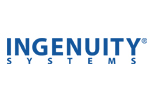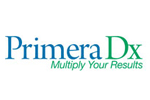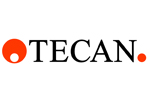08:00 | Registration |
|
Session: Advances in DNA and Tissue Arrays |
| |
09:00 |  | Keynote Presentation Real-Time Microarrays - The Path to Quantitation?
Steve Blair, Professor, University of Utah, United States of America
Instrumentation for real-time data acquisition from microarrays will be overviewed, along with a discussion of kinetics analysis methods. The prospects for quantitative data interpretation will be discussed in the context of heteroplasmy and methylation detection. |
|
09:30 | Next Generation Sequencing on Microarrays
Kalim Mir, Visiting Scholar, University of Oxford, United Kingdom
I will show how microarrays can be used as a platform for next generation sequencing and how single molecules can be detected within microarray features. |
10:00 | Automatic Algorithms for Analysis of cDNA Microarray and Chip-seq Data
Luis Rueda, Associate Professor, University of Windsor, Canada
This presentation discusses the new trends on automatically processing cDNA microarray images using clustering algorithms. Applications to processing Chip-Seq data to automatically detect binding sites are also discussed. |
10:30 | Coffee Break and Networking in Exhibition Hall |
11:45 | In Situ. Light- Directed Synthesis of High-Density RNA Microarrays
Mark Somoza, Professor, University of Vienna, Austria
High-density RNA microarrays, with hundreds of thousands of sequences, would be very useful for studying molecules that specifically interact with RNA—such as RNA-binding proteins, ribonucleases and drugs targeting RNA—and to make aptamer arrays for diagnostic applications. |
12:15 |  Technology Spotlight: Technology Spotlight:
Ingenuity iReport for Gene Expression Analysis
, , SelectBio
Megan Laurance, Associate Staff Scientist, Ingenuity Systems
|
12:30 | Lunch Break and Networking in Exhibition Hall |
12:45 |  Free Workshop Free Workshop
Single Sample, Single Slice, Single Prep, Single Well… Multiple Answers
|
13:30 | Poster Viewing Session |
14:15 | Gene Expression Profiling of Human Myeloid Leukemic MV4-11 cells Treated with 5-aza-2’-Deoxycytidine
Kyu-Tae Kim, Research Fellow, University of Newcastle, Australia, Australia
In this study, we have treated a human myeloid derived leukemic MV4-11 cell with a demethylating agent 5-aza-2'-deoxycytidine to examine its influence on genome wide gene expression. Whole genome expression profiles were measured using llumina Human Ref-8 arrays. |
14:45 | Using Microarrays to Understand the Developmentally Complex Regulation of the Intestinal Fructose Transporter GLUT5
Rolando Ferraris, Professor, UMDNJ, United States of America
Fructose induces rat GLUT5 expression only during weaning. We segregated age- and fructose-responsive genes and showed that GLUT5 regulation involves cross-talk between nutrient signals regulating specific transporters and hormonal, particularly glucocorticoid receptor-mediated, signals modulating intestinal maturation. |
15:15 | Coffee Break and Networking in Exhibition Hall |
16:00 | New Technologies for Large Scale Manufacturing of High Density Arrays. Design Rules and Cost Drivers
Georg Bauer, Head of R&D, Sony DADC, Germany
High density well and pillar arrays are applied from next generation sequencing to bead-based screening assays and clinical chemistry. The talk will address technical limitations, describes basic design rules and cost drivers. |
16:30 |  | Keynote Presentation Validation of Biomarkers In Tissue
Stephen Hewitt, Clinical Investigator, National Institute of Health, United States of America
Validation of clinical biomarkers remains dependent on demonstration of detection in disease tissue utilizing assays that can be applied in a routine care setting. The application of tissue microarrays has enabled high throughput pathology and speeded the process of biomarker validation. |
|
17:00 | Automating the Analysis of Tissue Microarrays in Basic Science, Clinical and Translational Applications
Toby Cornish, Assistant Professor, Johns Hopkins Medicine Bayview Medical Center, United States of America
Fully-automated segmentation is one of the few remaining obstacles to realizing the tissue microarray (TMA) as a truly high-throughput technique for tissue analysis. Approaches to automatic segmentation will be discussed, including multiplexing of reporters and pattern recognition. |
17:30 | Drinks Reception |





